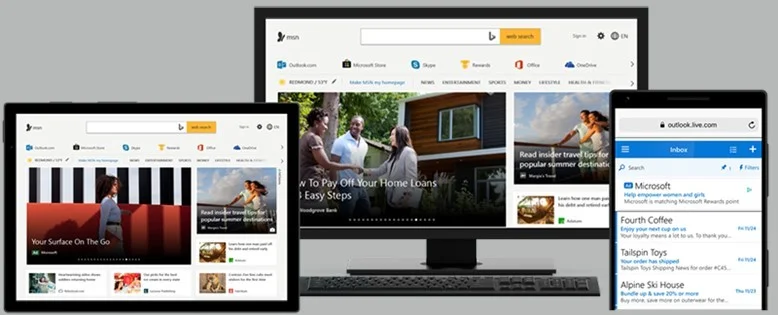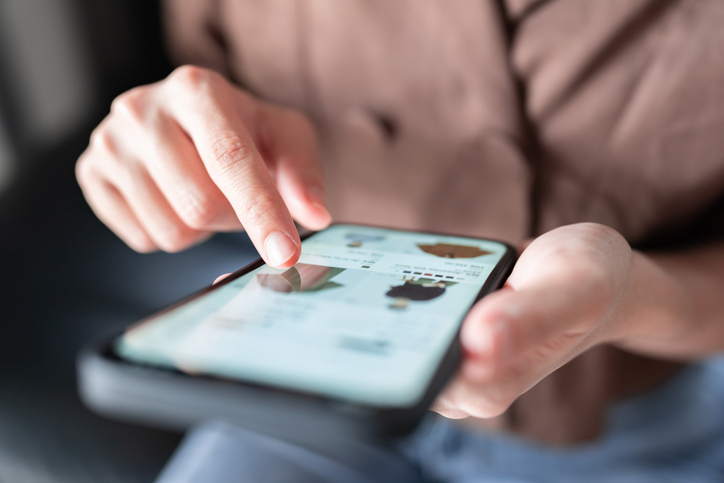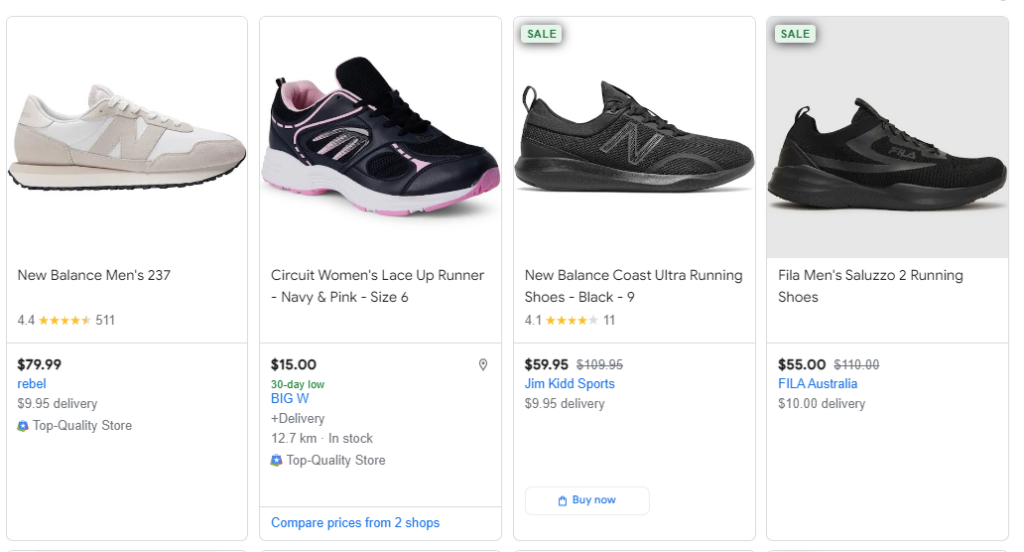
In today’s digitally driven world, businesses face a tough challenge, of figuring out how to manage a growing number of advertising channels to effectively reach and engage their target audiences. From online publishers like Google and Facebook, to website presence like SEO and live chat tools each channel presents unique advantages for businesses to reach potential leads.
The Evolving Consumer Journey
Modern consumers today are not confined to a single platform; they interact with brands across various touchpoints, making it essential for businesses to adopt a strategic approach that includes multiple channels.
While being everywhere all at once does sounds effective, it’s also going to cost you extra budget that small businesses just don’t have. Stretching resources too thin across numerous platforms doesn’t always give you the best return.
The Concept of Power Pairs
Businesses must be smarter with their approach, focusing on Power Pairs.
Power Pairs represent strategic combinations of complementary products or strategies within the realm of digital marketing. After running over 10,000+ campaigns we determined these, paired together, enhance the effectiveness your digital campaigns to achieve greater impact than if used individually. In this post, here are my top 6 Power Pair strategies and tips to help you generate leads.
Top Power Pair Advertising Channels
SEO + PPC – Holistic Search Strategy:
Google and other search engines return two kinds of results to users: organic results and paid results. Organic search results are the listings on a search engine results page (SERP) that appear naturally due to their relevance to the search query, not paid advertisements.
SEO focuses on improving organic search rankings, while SEM drives paid search efforts. Pairing SEO with SEM represents a full proof search strategy.
How does it work together?
- Search Engine Optimisation (SEO): SEO involves optimising website content, structure, and backend elements to improve organic search visibility and rankings on search engine results pages (SERPs).
- Search Engine Marketing (SEM): SEM encompasses paid advertising efforts, such as Google Ads, where businesses bid on keywords to display ads on search engine results pages.
Live Chat and Search – Capture Demand 24/7:
Driving traffic back to the website is not an issue with paid search advertising, but as a small business, servicing your customers on time can be difficult. You’re wearing so many hats and either on the road traveling, busy dealing with a customer.
In today’s world, customers have short attention spans, so responsiveness is crucial. There’s no better way to demonstrate excellent service than having a live chat that can connect customers with the right team immediately.
Adding live chat to your website alongside search ads can capture demand 24/7 by offering instant support and help to users who are actively looking for solutions.
How does it work together?
- Live Chat: Live Chat functionality allows businesses to engage with website visitors in real-time, providing instant support and assistance.
- Search Advertising: Search advertising involves bidding on keywords to display ads on search engine results pages, capturing users’ intent as they actively search for products or services.
SEM + Social – Cross Media Optimisation (XMO):
Now you already know that paid search advertising targets users on search engines based on their intent to find a particular product or service. It’s safe to say this strategy alone can only reach audiences who have an idea of what they want. But what if there’s more demand that’s not found on the search engine? For instance, if you are selling an ergonomic shoe that’s so niche, do you think there will be enough search queries for this? The short answer is no.
That’s why paid social media ads creates a robust cross-media optimisation strategy. You can generate interest and demand with like-minded audiences who have never heard of your company or product but will be a good fit based on their audience signals.
How does it work together?
- Search Engine Marketing (SEM): As mentioned earlier, SEM encompasses paid advertising efforts on search engines like Google, targeting users based on search intent.
- Social Media Advertising: Social media advertising involves promoting content, products, or services on social media platforms like Facebook, Instagram, and LinkedIn, targeting users based on demographic, interest, and behavioural data.
SEM + Performance Max – Multiply your Shopping Results:
The search journey is not linear; it’s complex and messy. For example, if you’re in the market for new running shoes, you might start by Googling the top running shoes for 2024. Then, you end up watching a YouTube video review about running shoes. Later, you check your email and see a sponsored message about sports shoes. The next day, you open your Google Chrome browser and find an article about running in your Discovery feed. This is the power of Performance Max Campaigns.
There are many touchpoints in a customer’s buying journey, so it’s important to be present at the right place and time for their choices. Performance Max helps amplify where your brand is seen in keyword-less inventory across all of Google’s properties.
SEM is an effective way to capture search intent, but combining it with Performance Max campaigns can significantly boost your results.
How it works together:
- Search Engine Marketing (SEM): SEM, as previously defined, involves paid advertising efforts on search engines.
- Performance Max Campaigns: Performance Max campaigns are automated campaigns in Google Ads that utilise machine learning to optimise bidding and targeting across various Google properties, including Search, Display, and YouTube.
Microsoft Audience Ads + Search:

When it comes to marketing, search engine ads aim to show the best ad for what someone’s looking for, while audience marketing focuses on showing each person the perfect ad. With audience marketing, you can hit your ideal audience in just the right spot at the right time. Microsoft Audience Ads are designed to target potential customers based on what we know about their interests.
Microsoft AI gets to know each consumer personally: what they like to read, what products they’re after, what they’ve been checking out online, what they’ve bought, and even their LinkedIn profile. Using all this info, our AI matches them with personalised audience ads, so advertisers can connect with people who are all set to take action.
How it works together:
- Microsoft Audience Ads: Microsoft Audience Ads allow businesses to target specific audiences across the Microsoft Audience Network, leveraging demographic, geographic, and behavioural data.
- Search Advertising: Search advertising involves bidding on keywords to display ads on search engine results pages, capturing users’ intent as they actively search for products or services.
Facebook Catalogue + Google & Bing Shopping:
Moving away from Search, let’s talk about the holy grail for a robust and foolproof Shopping campaign strategy.
The reason for using two different channels is simple: consumer behaviour changes across platforms and purchase intent. For instance, if you’re shopping for a charger at a lower price point, you’re more likely to buy it impulsively. In contrast, for a once-a-year purchase like a phone, you’d spend more time gathering information before buying.
Listing your products across multiple platforms can increase visibility and sales, catering to different types of buyers—researchers, bargain hunters, and impulse buyers.
Utilising Facebook Catalogue alongside Google and Bing Shopping creates a comprehensive product promotion strategy, showcasing your products visually and directly in search results.
How it works together:
- Facebook Catalogue: Facebook Catalogue allows businesses to showcase their products in a visually appealing format on Facebook and Instagram.
- Google & Bing Shopping: Google Shopping and Bing Shopping are platforms that allow businesses to list their products directly on search engine results pages, complete with images, prices, and descriptions.
How do the products support each other within the PowerPair?
Each product within the PowerPair complements and enhances the other, working together to drive better results. For example, in the SEO + SEM PowerPair, SEO helps your site show up in search results, making it easier for SEM ads to grab the attention of interested users. Similarly, using Live Chat alongside Search ads lets you capture demand 24/7 by giving instant support to users who are actively looking for solutions.
In the SEM + Social PowerPair, SEM campaigns that target users based on what they’re searching for can be combined with social media ads that target people based on their interests and behaviours. This helps you reach different audiences throughout their customer journey and connect with them on various platforms. Plus, when you integrate SEM with Performance Max Campaigns, it boosts your shopping results using machine learning to get the best results on Google’s platforms.
Looking at standalone campaigns vs. PowerPair campaigns
When you compare standalone campaigns to PowerPair campaigns, you see how combining different strategies can bring better results. Standalone campaigns might do okay on their own, but PowerPair campaigns often outperform them in reach, engagement, and conversion rates. For instance, pairing SEO with SEM in a holistic search strategy can increase click-through rates and lower costs compared to just running SEM ads alone. Similarly, combining SEM with social media ads can increase your brand visibility, get more engagement on your ads, and lead to more sales.
Verticals/Industries that we’ve seen benefit from these PowerPairs
Lots of industries and businesses see benefits from using PowerPairs in their digital marketing strategies. For example, e-commerce businesses use the Facebook Catalogue + Google & Bing Shopping PowerPair to showcase their products across multiple platforms, which boosts visibility and sales. Service-based industries like healthcare and finance use the SEM + Social PowerPair to target users across search and social media to get more leads and customers. Plus, B2B businesses find success with the Microsoft Audience Ads + Search PowerPair, reaching decision-makers and influencers through targeted ads on the Microsoft Audience Network. These examples show how versatile and effective PowerPairs can be in driving results and ROI across different sectors.
Conclusion
By now you should have a good idea of which power pair strategies will drive the most return for your marketing efforts. And if you’re still not sure, get it touch with us today to learn more about our power pair products. We’re here to help you learn more about our power pair products and how they can transform your marketing game.
This is part one of our power pair series if you would like more detail on how each of these pairs work with real life case studies comment below.









